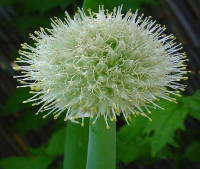Development and Evaluation of a Topical Herbal Gel for the Treatment of Tinea pedis http://www.doi.org/10.26538/tjnpr/v6i12.2
Main Article Content
Abstract
Allium cepa fractions have been shown to possess antifungal activity against Trichophyton rubrum. The antifungal effect of the plant is mainly attributed to the presence of Allicin. This study aims to formulate a topical antifungal gel and assess its physical stability and efficacy parameters against T. rubrum. The gel was formulated with various concentration of Allium cepa fractions FI (5%), F2 (7.5%), and F3 (12.5%). Each formulation was tested for physical stability and efficacy against T. rubrum. The agar well diffusion method was used to determine their antifungal activities using SDA plates. Furthermore, the antifungal activities were assessed by the presence or absence of inhibition zones after incubating the plates at 28oC for 7 days. The topical gel was a fawn-coloured homogenous semi-solid preparation that was readily spreadable upon skin contact with no tackiness sensation. The optimized gel showed no phase separation after the cycling test in six cycles (one cycle consists of temperatures of 4oC for 24 hours and 40oC for 24 hours). The efficacy test showed that the topical gel produced better inhibition zones against T. rubrum than the negative control. F3 (12.5%) showed the most inhibitory potentials of all the formulations (F1 and F2). These results demonstrate that Allium cepa fractions can be formulated into a stable semi-solid dosage form and with antifungal activity against T. rubrum.
Downloads
Article Details

This work is licensed under a Creative Commons Attribution-NonCommercial-NoDerivatives 4.0 International License.
References
Wahdini M, Ramli ML, Risa MNH. Characteristic of Patient and Dermatophyte Species Causing Tinea Kruris in Gunung Jati Hospital, Cirebon, West Java. Glob Med and Health Commun.2015; 3(2):71-77.
Rustikaand AW. Characteristic of Garbage Collection Officers with Tinea Pedis in Final Disposal Site, Rawa Kucing, Tangerang. J Health Ecology. 2018; 17(1):11-19.
Singh BK. Assessment of Antifungal Activity of Onion (Allium Cepa L.) Bulb Extract. Int Edu Res J. 2017; 3(9):35-36.
Nurhasanah , Andrini F, Hamidy Y. Activity of Juice of Allium ascalonicum L. on Candida albicans by In vitro. J MedSci. 2015; 9(2):71–77.
Mercy KA, Ijeoma I, Emmanuel KJ. Anti-Dermatophytic Activity of Garlic (Allium sativum) Extracts on some Dermatophytic Fungi. Int Lett NatSci. 2014; 24:34-40.
Genatrika E, Sundhani E, Oktaviana MI. Gel Potential of Red Onion (Allium cepa L.) Ethanol Extract as Antifungal Cause Tinea Pedis. J Pharm Bioallied Sci. 2020; 12(Suppl2): S733-S736.
Kyung KH. Antimicrobial Properties of Allium Species. CurrOpinBiotechnol. 2012; 23(2):142–147.
Cavallito CJ and Bailey JH. Allicin, The Antibacterial Principle of Allium sativum. Isolation, physical properties and antibacterial action. J Am Chem Soc.1944; 66(11):1950-1951.
Ilić DP, Nikolić VD, Nikolić LB, Stanković MZ, Stanojević LP, CakićMD. Allicin and Related Compounds: Biosynthesis, Synthesis and Pharmacological Activity. Phys, Chem and Technol. 2011; 9(1):9-20.
Yanhendri, Satya WY. Various Topical Dosage Forms in Dermatology. CDK-1942012; 39(6):423-430.
Karossi AT, Hanafi M, Sutedja L. Isolation and Antibacterial Test of Garlic Oil. Indonesian J App Chem. 1993; 3(2):49-53.
Aiyalu R, Govindarjan A, Ramasamy A. Formulation and Evaluation of Topical Herbal Gel for the Treatment of Arthritis in Animal Model. Brazillian J Pharm Sci. 2016; 52(3):493-507.
Panigrahi L, Ghosal SK, Pattnaik S, Maharana L, Barik BB. Effect of Permeation Enhancers on The Release and Permeation Kinetics of Lincomycin Hydrochloride Gel Formulations Through Mouse Skin. Indian JPharm Sci. 2006; 68(2):205-211.
Walker RB and Smith EW. The Role of Percutaneous Penetration Enhancers. Adv Drug Delivery Rev. 1996; 18(3):295-301.
Kuncari ES and Iskandarsyah P. Evaluation, Physical Stability Test and Syneresis of Gel Containing Minoxidil, Apigenin and Celery Herb Extract (Apium graveolens L.). Health Res Bulletin. 2014; 42(4):213-222.
Irobi ON, Moo-Young M, Anderson WA, Daramola SO. Antimicrobial activity of bark extracts of Bridelia ferruginea (Euphorbiaceae). J Ethnopharmacol. 1994; 43(3):185-190.
Almawlah YH, Alaa H, Al-Jelawi SO. Antibacterial Activity of Three Plant Extracts Against Multidrug Resistance Pseudomonas Aeruginosa. Asian J Pharm Clin Res. 2017; 10(12):193-197.
Kemenperin RI.SNI 16-4399-1996. Sunscreen preparation. Jakarta: National Standardization Agency; 1996.
Dantas MGB, Reis SAGB, Damasceno CMD, Rolim LA, Pedro JR, Carvalho FO, Lucindo JQ, Almeida JRG. Development and Evaluation of Stability of a Gel Formulation Containing the Monoterpene Borneol. The Sci World J. 2016:1-4.
Carvalho FC, Barbi MS, Sarmento VHV, Chiavacci LA, Netto FM, Gremi˜ao MPD. Surfactant Systems for Nasal Zidovudine Delivery: Structural, Rheological and Mucoadhesive Properties. J Pharm Pharmacol. 2010; 62(4):430–439.
YatiK JM, Gozan M, Dwita LP. Effect of Variation Concentration of Hydroxy Propyl Methyl Cellulose (HPMC) on Physical Stability of Tobacco Extract Gel (Nicotiana tabaccumL.) and Activity on Streptococcus mutans. PharmSci Res. 2018;5(3):133-141.
Lieberman HA, Reiger MM, and Banker GS. Pharmaceutical Dosage Forms: Disperse Systems. Vol 2. New York: Marcel Dekker; 1996; 415-425p
AlfiahRR KSN and Turnip M. The Effectiveness of Methanol Extract of Mikania micrantha K. against The Growth of Candida albicans. JProtobiont. 2015; 4(1):52-57.
Skerget M, Kotnik P, Hadolin M, Hras AR, Simonic M, Knez Z. Phenols, Proanthocyanidins, Flavones and Flavonols in Some Plant Materials and Their Antioxidant Activities. Food Chem. 2005; 89(2):191-198.
Panda S, and Bandyopadhyay PK. Chemical Information from GC-MS Studies of Methanolic Leaf Extract of Andrographis paniculate and Datura metel and Their Antibacterial Activity Against Isolated Pseudomonas aeruginosa (pb112) Strain. Int J Pharm Bio Sci. 2013; 4(1):909-915.
Harris JC, Cottrell SL, Plummer S, Lloyd D. Antimicrobial Properties of Allium sativum (Garlic). Appl Microbiol Biotechnol.2001; 57(3):282-286.
Dewi DAP and Warganegara E. Benefit of Allium sativum L. in The Treatment of Tinea Versicolor Fungal Infection. Majority. 2016; 5(1):33-37.
Septiadi T, Pringgenies D, Radjasa OK. Phytochemical Tests and Antifungal Activity of Sea Cucumber Extract (Holoturia atra) From Bandengan Jepara Beach Against Candida albicans. J Mar Res. 2013; 2(9):76-84.
Gholib D. Inhibition Test of Senggani (Melastoma alabathricum L.) Leaves Against Trichophyton Mentagrophytes and Candida albicans. Biology News. 2009; 9(5):523-527.
AniszewkiT. Alkaloid-Secrets of Life. Amsterdam: Elsevier Science; 2007; 142-179p.


